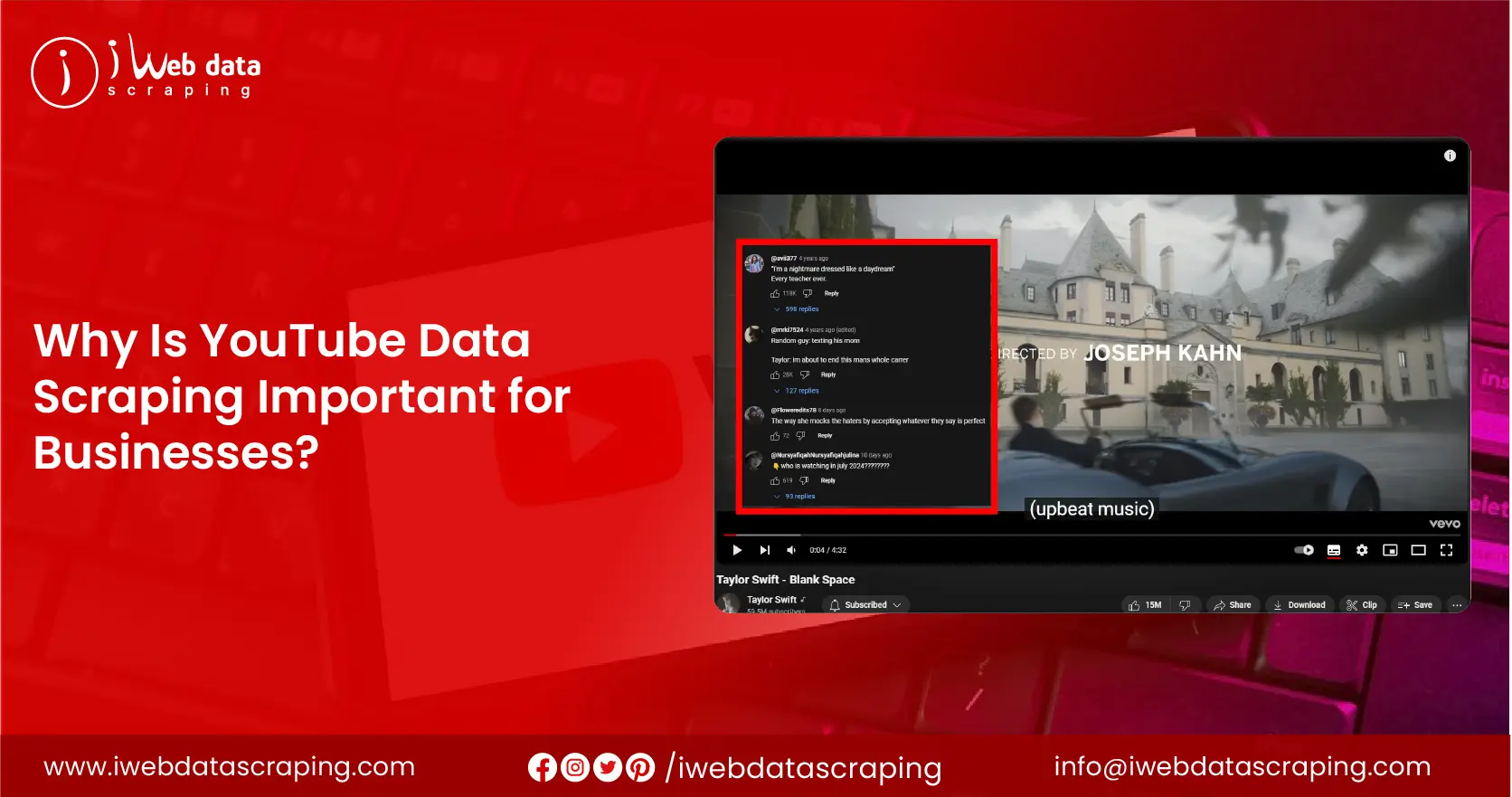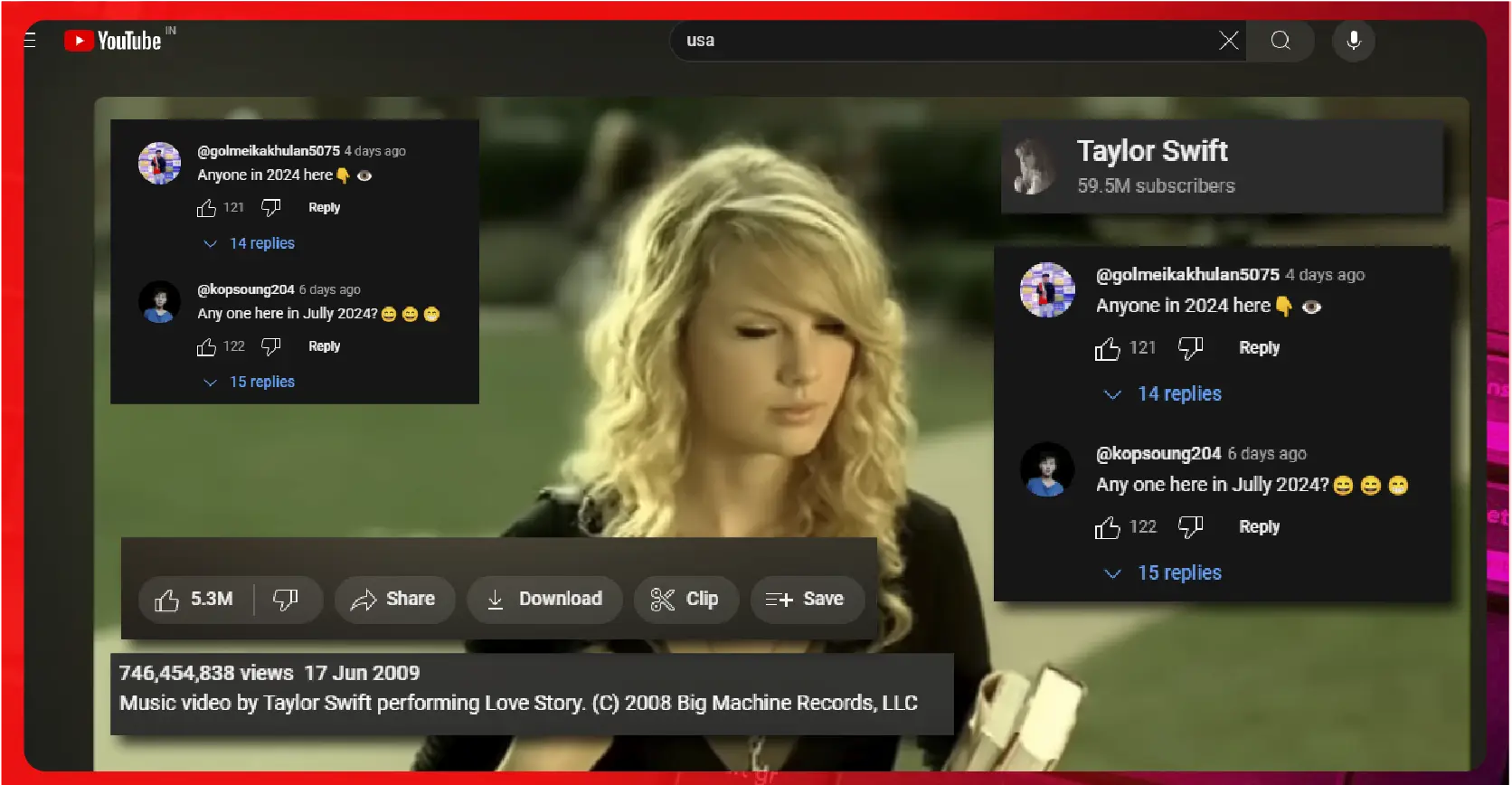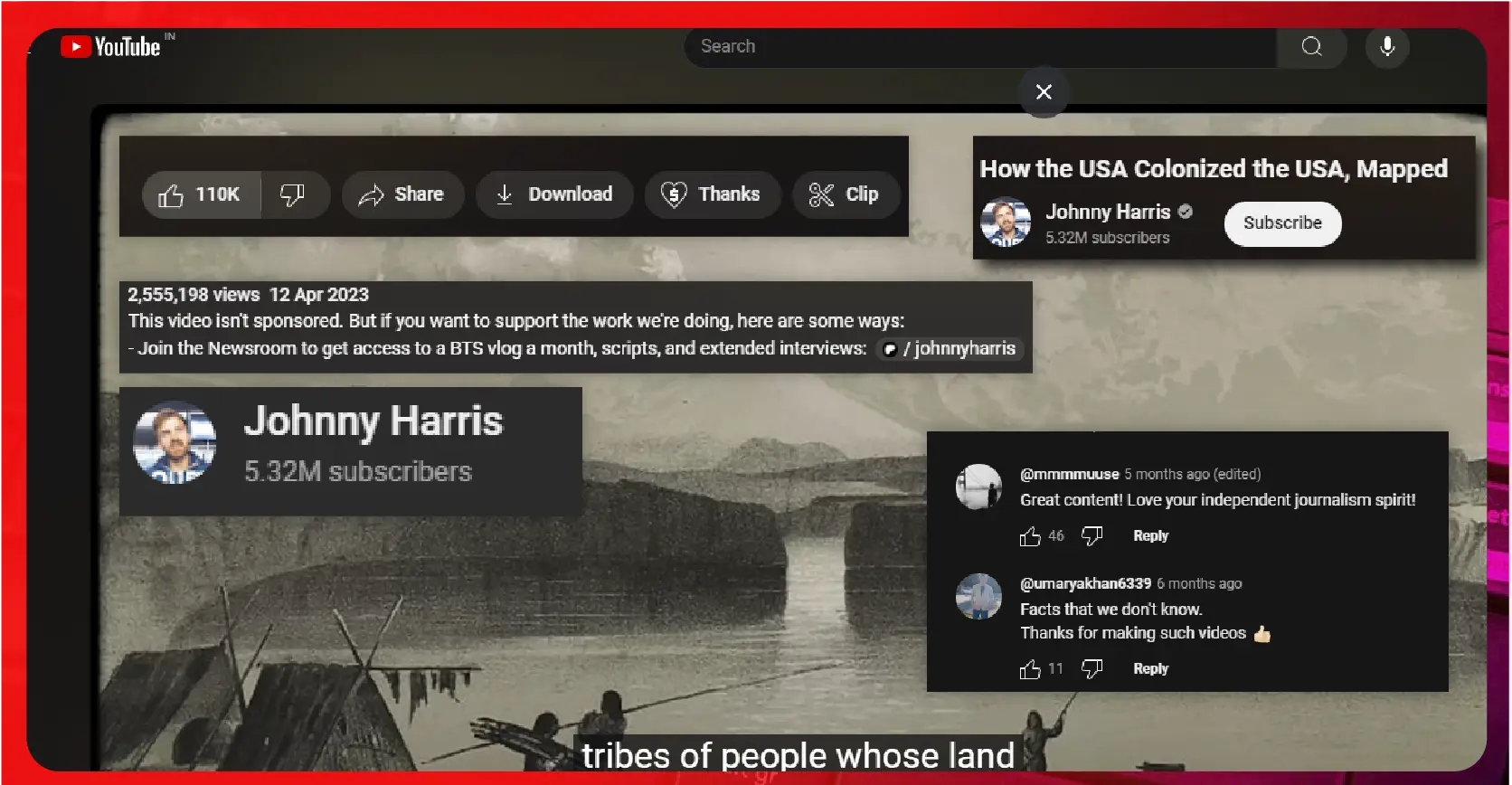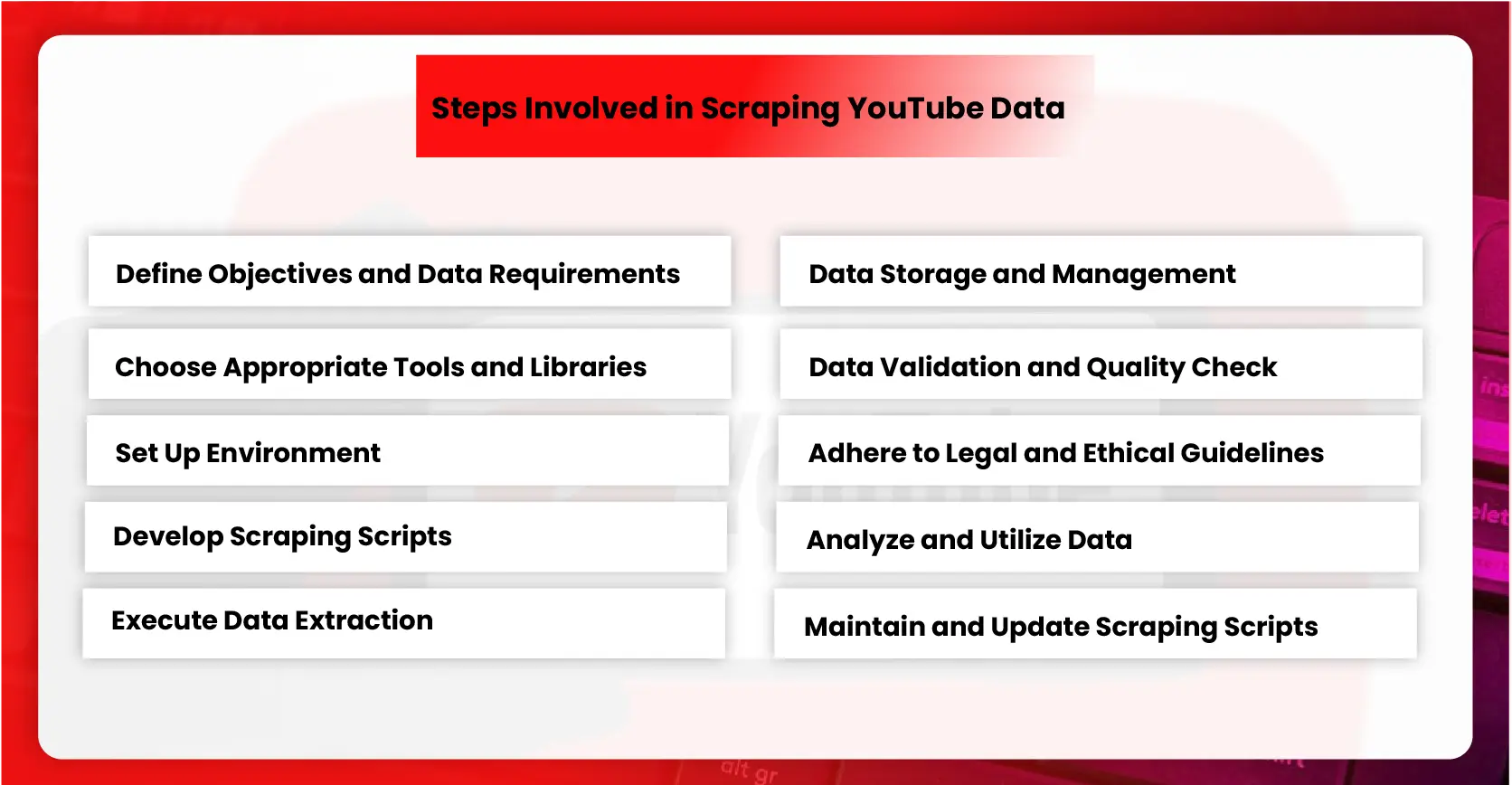

Social media data scraping involves collecting valuable information from social media platforms to analyze trends, user behavior, and market dynamics. This technique allows businesses, researchers, and marketers to gather insights into consumer preferences, sentiment analysis, and competitor strategies. By leveraging social media data, organizations can make informed decisions, tailor marketing campaigns, and improve customer engagement.
YouTube data scraping focuses on extracting data from the popular video-sharing platform. YouTube hosts many user-generated content, from entertainment to educational videos. Scraping YouTube data can provide insights into video performance metrics, audience demographics, and content trends. This information is invaluable for content creators, advertisers, and researchers aiming to understand viewer preferences, optimize video strategies, and measure the impact of their content. Ethical considerations and adherence to platform policies are crucial when engaging in YouTube data collection to ensure responsible data usage.

YouTube data extraction involves collecting various data types that provide insights into video performance, audience behavior, and content trends. Here are some key types of data collected from YouTube data scraping:
Title, description, and tags
Upload date and time
Video length and resolution
View count
Like and dislike counts
Comment count and engagement rate
Share count
Demographic information (age, gender, location)
Viewer retention and watch time
Subscriber growth and churn
Comments and replies
Likes and dislikes on comments
Audience interaction patterns
Popular keywords and hashtags
Trending topics and video categories
Frequency and timing of uploads
Subscriber count and growth rate
Total views and watch time across the channel
Channel engagement metrics (likes, comments, shares)
Data on competitors' videos and channels
Comparative performance metrics
Competitors' audience engagement and feedback
Ad performance and revenue estimates
Sponsorship mentions and product placements
Affiliate link performance
These types of data collected from YouTube data extraction enable content creators, marketers, and researchers to gain deep insights into video performance, audience preferences, and market trends, helping them to refine their strategies and maximize their impact on the platform.

Businesses can significantly benefit from social media data scraping services in various ways, leveraging the insights gained to enhance their marketing strategies, improve content creation, and understand market trends. Here are some key benefits:
Identify Trends: By analyzing popular videos and trending topics, businesses can stay ahead of market trends and create content that resonates with their target audience.
Competitor Analysis: Collecting data from competitors' channels helps businesses understand their strategies, identify gaps, and develop more effective campaigns.
Audience Insights: Understanding viewer demographics, preferences, and engagement patterns enables businesses to tailor their content to meet audience expectations better.
Performance Metrics: Monitoring views, likes, comments, and shares helps assess what type of content performs best and refine future videos accordingly.
Targeted Advertising: Data on audience demographics and interests allows for more precise targeting in YouTube ad campaigns, improving ROI.
Influencer Partnerships: Identifying influencers with high engagement and relevance to the brand can enhance promotional efforts and reach a broader audience.
Sentiment Analysis: Scraping and analyzing comments and engagement data help businesses gauge public sentiment towards their brand and address any negative feedback promptly.
Customer Engagement: Engaging with viewers through comments and feedback enhances customer relationships and loyalty.
Consumer Feedback: Comments and reviews on product-related videos provide valuable feedback that can be used to improve existing products or develop new ones.
Market Needs: Analyzing discussions and viewer questions helps identify unmet needs and opportunities for innovation.
Performance Comparison: Comparing performance metrics with competitors helps businesses understand their market standing and identify areas for improvement.
Content Strategy: Learning from competitors' successful content strategies can inspire new ideas and approaches for a business's content.
Optimal Posting Times: Analyzing when viewers are most active helps schedule uploads for maximum engagement.
Content Formats: Identifying which content formats (e.g., tutorials, reviews, and vlogs) drive the most engagement helps diversify and optimize content offerings.
Ad Revenue Optimization: Understanding which videos generate the most ad revenue can help businesses focus on high-performing content.
Affiliate Marketing: Data on popular products and services mentioned in videos can guide affiliate marketing efforts and partnerships.
By utilizing YouTube video data scraper, businesses can gain valuable insights that drive strategic decisions, enhance customer engagement, and ultimately lead to increased growth and profitability.

Collecting YouTube data involves several steps to ensure accurate and comprehensive data collection while adhering to legal and ethical standards. Here is a detailed outline of the steps involved:
Identify Goals: Determine what specific insights you aim to gain from the data (e.g., trends, competitor analysis, audience demographics).
Specify Data Points: Decide the data types to collect, such as video titles, descriptions, views, likes, comments, upload dates, and channel statistics.
Select Tools: For data extraction, choose web scraping tools or libraries like Beautiful Soup, Scrapy, or Selenium.
API Utilization: Consider using the YouTube Data Scraping API for a more structured and legally compliant data collection process.
Install Necessary Software: Ensure you have installed Python or another programming language and the required libraries (e.g., requests, Beautiful Soup).
Configure Proxies and User Agents: Use proxies and rotate user agents to avoid IP blocking and simulate different user requests.
Write Code: Create scripts to navigate YouTube pages and extract desired data points. If using the YouTube API, write code to send requests and handle responses.
Handle Pagination: Implement logic to handle pagination and scroll through multiple results pages if necessary.
Run Scripts: Execute your scripts to start data collection. Ensure they run smoothly without interruptions.
Monitor for Errors: Look for potential errors or changes in YouTube's HTML structure that might affect your scraping.
Save Data: Store the scraped data in a structured format such as CSV, JSON, or a database.
Data Cleaning: Clean the data to remove duplicates, handle missing values, and ensure consistency.
Verify Accuracy: Cross-check a sample of the scraped data against the actual YouTube content to ensure accuracy.
Maintaining Data Integrity: Regularly update the data to reflect current information and handle discrepancies.
Review Terms of Service: Ensure your activities comply with YouTube's terms of service and guidelines.
Obtain Necessary Permissions: If required, obtain consent or necessary permissions for data usage.
Robots.txt: Follow directives specified in YouTube's robots.txt file regarding which parts of the site can be crawled.
Data Analysis: Use analytical tools to process and interpret the scraped data, gaining valuable insights.
Apply Insights: Implement the insights into your business strategy, marketing campaigns, content creation, or other relevant areas.
Regular Updates: Keep your scripts updated to adapt to YouTube's website structure or API changes.
Monitor for Changes: Monitor YouTube for any updates that may require adjustments to your scraping approach.
Following these steps, you can effectively scrape YouTube data to gain valuable insights while maintaining ethical standards and ensuring compliance with legal guidelines.
Conclusion: Web scraping YouTube data offers businesses valuable insights into market trends, audience preferences, and competitive strategies, enabling data-driven decision-making and enhanced content optimization. By systematically collecting and analyzing video metrics, comments, and engagement statistics, businesses can refine their marketing strategies, improve customer engagement, and stay ahead of competitors. Adhering to ethical and legal guidelines, such as using YouTube's API and respecting terms of service, ensures responsible data usage and mitigates potential risks. Ultimately, social media data scraper empowers businesses to leverage rich, actionable data to drive growth, innovation, and sustained success in the dynamic digital landscape
Discover unparalleled web scraping service or mobile app data scraping offered by iWeb Data Scraping. Our expert team specializes in diverse data sets, including retail store locations data scraping and more. Reach out to us today to explore how we can tailor our services to meet your project requirements, ensuring optimal efficiency and reliability for your data needs.